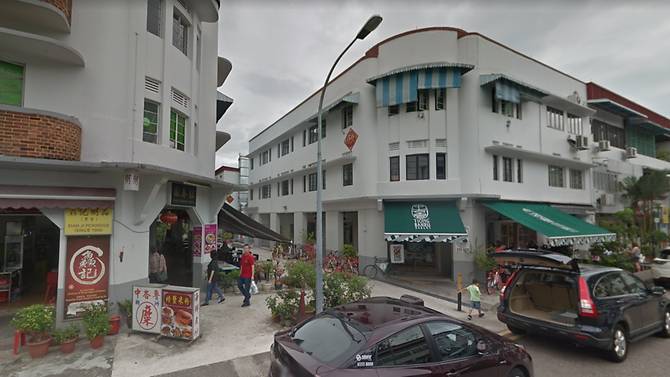SINGAPORE: Tenants, if there is anything that you need to know before you rent a home, it is this: Rental rates are always negotiable.
Not only is nothing set in stone, negotiation margins – the difference between asking price and the price the landlord is willing to accept – can be rather large, making it worth your while in learning the techniques in negotiating rent before you make your offer.
Negotiating rent Step #1: Research rental prices and trends
Whether faced by a landlord’s agent or the actual landlord, your negotiation counterpart will in all likelihood know very well what the rental property market trends are, and what the market rate for the room or apartment is at the time.
To level the playing field, you should know the information as well. There are a variety of ways to go about this, but you can view past rental transaction prices for properties on the 99.co property portal when you view a listing. Cross-referencing will give you a good indication of the going rate of a rental apartment/room, as well as whether prices have been trending up or down for a given area.
In addition, the Urban Redevelopment Authority (URA) publishes quarterly reports that sheds light on which direction rental prices have been moving.
Negotiating rent Step #2: Know your bargaining position
While the price trends differ between neighbourhoods and even between different developments within the district, the general trend has been that rental supply is higher than demand. Right now, the market remains a tenant’s market. This means that the market is in your favour and your bargaining position is good.
When the rental market is in an upward swing and landlords find their property hotly contested by prospective tenants, they will have the power to play tenants out against each other and request higher renting fees. If, however, the rental market is sluggish and the property runs the risk of being vacant, landlords will have to be more accommodating and settle for lower rental fees.
Your homework would have informed you about the state of the rental market, whether the unit/development in question is popular, and whether your bargaining position is good.
When you are equipped, no landlord or agent will be able to unscrupulously lease you a S$1,100/month room for S$1,400. And while the right negotiation margins are probably still a bit uncertain, you will have a general idea of what to pay and what not to pay for your next place.

When negotiating rental, consider the neighbourhood in which the apartment is located. (Image: Google Maps)
Negotiating rent Step #3: Play hard to get
Between truth and lies, right and wrong, fibs, facts and fiction lie vast plains of ambiguity – and it is here that you should be negotiating your rental.
Homework and an analysis of your bargaining position can only bring you so far. At some point you will have to take the jump and join in the game of negotiation.
Before and during your viewing, do not give away how much you love and want to rent the unit or how much you are really willing to pay for it.
The landlord’s advantage is with you not knowing the lowest price he/she will settle for, so do not undermine your advantage by revealing the highest price you are willing to pay.
Here is what to do during the viewing, regardless of whether you like the place or not:
1. Ask all the necessary basic questions (for example, location, utilities, last maintenance, condo facilities and policy)
2. Don’t reveal you have your own furniture when viewing an unfurnished or partially-furnished unit
3. Ask the landlord’s asking price (even if you’ve already seen it on the listing)
4. Ask if it is negotiable (even if it already looks a good deal)
5. Regardless of their reply, say you will take time to consider before deciding whether to make an offer. Do not make an offer on the spot.
6. Mention you have another property to view in the same area.
Negotiating rent Step #4: Get into the good books of the landlord’s agent
While viewing the property, it is also a good idea to engage the landlord’s agent in conversation.
Drop hints that you will be a responsible tenant (such as asking if cleaning equipment is provided). If you are renting a room, ask about noise levels as you prefer a peaceful and quiet environment.
Why build rapport with the landlord’s agent? Well, when you put the landlord’s agent at ease by showing that you are an reliable and trouble-free tenant, he/she will be more inclined to vouch for you to the client as the preferred tenant choice.
Getting in their good books could prove especially important considering there may be competing offers at the same price.
From speaking to property agents, we understand that it is quite common for landlords to accept a slightly lower offer just because they like the tenant better.
Negotiating rent Step #5: Assess your bargaining position
If you really like the apartment and have managed to build a rapport with the landlord’s agent or the landlord in a short space of time, you can now appear interested, but not too interested.
Mention how much you like the apartment, but also mention that you are still deciding between a few choices.
If everything has been going well so far, the landlord or agent will respond by reiterating the benefits of this particular unit you are viewing. That is when you know that you have the bargaining power on your side. The landlord is now more willing to negotiate, even if it means slightly lowering his/her minimum acceptable price.
Negotiating rent Step #6: Play around with the variables
After the viewing, when not in the presence of the landlord, you should be able to state your intended offer price.
Before you do so, remember it is not all about money. During offer and negotiation, you may suggest playing around with how utilities and furniture are incorporated as part of the eventual Tenancy Agreement (TA).
For instance, if you intend to bring in or buy your own furniture anyway, say that you’re wondering if the landlord can lower the price further by not furnishing the unit/room.
If the landlord expresses unwillingness to lower the rent beyond a certain figure, you may also ask that the unit comes with specific furniture as part of the rental.
Landlords, in these cases, are inclined to say yes because the supplied furniture can be used for subsequent tenants.
Negotiating rent Step #7: Use that ace up your sleeve
Unless you snagged a fantastic deal right away, take some time to mull it over at home before agreeing to sign the Letter of Intent (LOI).
Doing so not only gives you some time to genuinely think it over, but it also puts you in the position to deal your last cards of the game.
If the revised asking price is still too high for your liking, call up the agent and say that you are undecided between two units and ask whether the landlord can quote a final price, while mentioning the price you have in mind having done your homework.
This is the final round of negotiation. If the lowered rental gets within an acceptable range of the price you have in mind together with the terms you want, it is time to make a final offer and seal that deal.
The negotiating master – kind of
The seven steps above show one thing: doing your homework will help you win half the battle. Not only does it prevent nasty surprises, it gives you leverage for later negotiation, for example “I know that the landlord is not including utilities as part of the rent, but a neighbouring tenant I’ve spoken to is paying a similar price with all utilities inclusive. Might the landlord be willing to reconsider?”
While we won’t all turn into top-notch salesmen or world-class negotiators overnight, we can take these best practices and help us secure a competitive rental rate for our next home.
Source: Channel NewsAsia, 25th November 2018, 99.co (Photos: Pexels, Google Maps)

